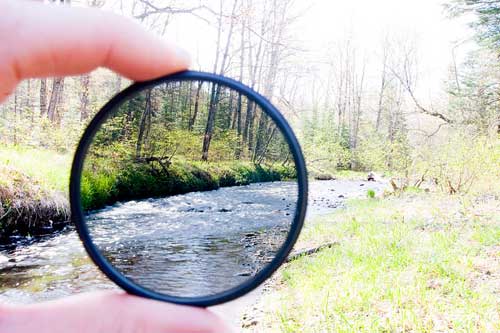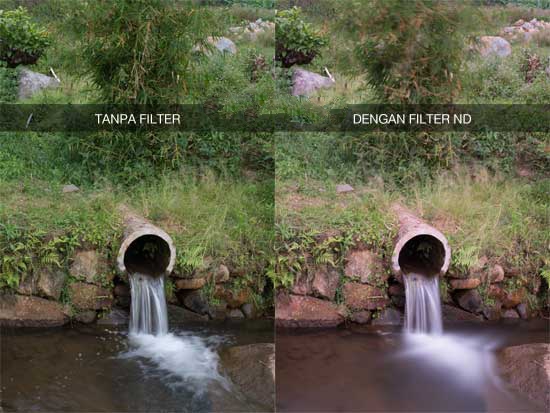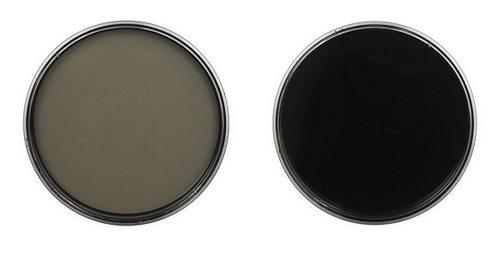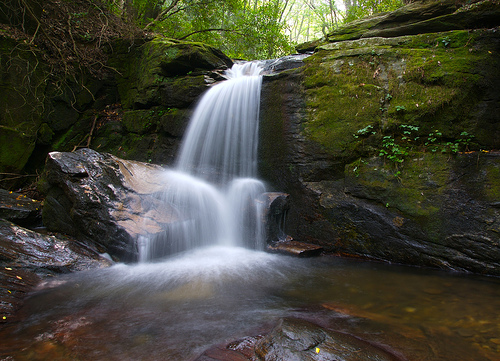What Is a Neutral Density Filter?
Filter Neutral Density (ND) is the main filter for long exposure photograph. ND filters are no different from the physical shape and the polarization filter mounted in front of the screw through the lens, see pics below. ND stands for Neutral Density, Neutral words or less because it does not change the direction and character of the light. While the density because it reduces the intensity of light. So more or less could be interpreted as a useful filter to reduce the intensity of light but does not change its character.
Filter Neutral Density (ND) is the main filter for long exposure photograph. ND filters are no different from the physical shape and the polarization filter mounted in front of the screw through the lens, see pics below. ND stands for Neutral Density, Neutral words or less because it does not change the direction and character of the light. While the density because it reduces the intensity of light. So more or less could be interpreted as a useful filter to reduce the intensity of light but does not change its character.
ND Filter Ideal Concept
A perfect ND filter should cut the light evenly. It means they will not change color. If you are photographing an object, fitted or not fitted with filters ND should have exactly the same color. In fact, the optical quality of a ND filter will affect the tonal and color. See photo below, after the ND filter fitted, color images tend to yellow than before the filter fitted.
Usability and How it Works ND Filters
The primary use of a neutral density filter is to reduce the amount of light entering the lens. This filter applications in general is to take pictures in a long exposure time. For example, look at the two photos below:
A perfect ND filter should cut the light evenly. It means they will not change color. If you are photographing an object, fitted or not fitted with filters ND should have exactly the same color. In fact, the optical quality of a ND filter will affect the tonal and color. See photo below, after the ND filter fitted, color images tend to yellow than before the filter fitted.
Usability and How it Works ND Filters
The primary use of a neutral density filter is to reduce the amount of light entering the lens. This filter applications in general is to take pictures in a long exposure time. For example, look at the two photos below:
Photo to the left (without filters) have the following exposure parameters: shutter speed of 1/8 sec and f/16 aperture, while the right photo (I put 10 stop ND filter): 58 sec and f / 8. You can see the effects of what can be achieved when an ND filter is installed, look at the shape of the original water fall looks ordinary becomes soft like cotton.
If you ever wear sunglasses or being in a car equipped film, which was originally a very bright outlook to be a bit dim not? Well, a neutral density filter has the same working principle: reduce the light. The difference is the reduced light light coming through the lens of the camera sensor into your DSLR or mirrorless.
How Much Light The Reduced ND Filter?
If you ever wear sunglasses or being in a car equipped film, which was originally a very bright outlook to be a bit dim not? Well, a neutral density filter has the same working principle: reduce the light. The difference is the reduced light light coming through the lens of the camera sensor into your DSLR or mirrorless.
How Much Light The Reduced ND Filter?
ND filters have a specific notation to indicate how much they are able to cut out the light. For example, the brand ND filter B + W B + W with notation 106 means the filter is able to reduce as much as 6 stop light. Hmmm, okay if you stop making your words confused, please read the article about stop here before going further, if it is not moving on.
Reduce as much as 6 stop light could translate on the field as follows: let's say you find a waterfall disebuah very sunny day and wanted to make cotton water effect like this photo.
Reduce as much as 6 stop light could translate on the field as follows: let's say you find a waterfall disebuah very sunny day and wanted to make cotton water effect like this photo.
-You do metering (what is metering?) And your DSLR camera is in aperture priority mode (aperture priority?)
-When the aperture is set at f/11 figures, obtained camera shutter speed 1/250
-Because the water to achieve the effect of cotton like the photo above need (example only) slow shutter speed 1/4 sec, then you remove the 6 stop ND filter to darken the state
-From the initial measurement 1/250 sec
-Down 1 stop is 1/125 sec
-Down 2 stop is 1/60 sec, etc. ...
-Until the stop is down 6 1/4 sec.
-Binggo deh get a waterfall effect soft cotton with ND filter.
-When the aperture is set at f/11 figures, obtained camera shutter speed 1/250
-Because the water to achieve the effect of cotton like the photo above need (example only) slow shutter speed 1/4 sec, then you remove the 6 stop ND filter to darken the state
-From the initial measurement 1/250 sec
-Down 1 stop is 1/125 sec
-Down 2 stop is 1/60 sec, etc. ...
-Until the stop is down 6 1/4 sec.
-Binggo deh get a waterfall effect soft cotton with ND filter.




 RSS Feed
RSS Feed